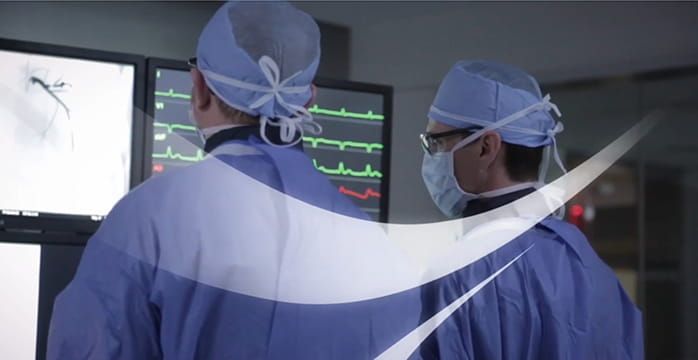Reasons why I choose
Glidesheath SlenderTM

"What are the clinical benefits of Glidesheath Slender? "
Shigeru Saito:The main benefit is that the outer diameter is thinner compared to a conventional sheath with the same inner lumen. This helps reduce damage to patients' vessels and leaves smaller scars.
Makoto Hyodo:In the past, femoral approach was the first choice for PCI, but thanks to Glidesheath Slender, we can now use 7Fr with radial approach. For patients, this brings benefits related to bedrest. With the femoral approach, patients resent the lengthy bedrest. But with radial, patients can get up soon after surgery and it’s a benefit they can really feel.
James Nolan:I've been practiced in radial access for a very long time and initially our access to radial optimized equipment was very limited and now we have the glide sheath slender and it's principle advantage for patients is that it minimizes trauma to the patient's radial artery, so it will be associated with less vascular injury and reduced risk of radial artery occlusion. So it preserves their patient's radial artery for future use and you know this is a real advantage.
Chee Tang Chin:The name says it all, it is slender, so for patients, slender means smaller, and smaller means more comfortable. We go radial, which gives comfort, and then we use a smaller sheath and we cause less discomfort when we put in the sheath and less discomfort when we remove it. So with a smaller sized sheath, because it is so slender, we can go into the radial artery very easily, and the mismatch between radial artery size and sheath is much less, and so we have downstream very few complications with the radial artery, and that is actually very important because you do not want to have a nice procedure and then one month later your patient comes back with a complication, and then you have to start all over again. That is not the best. So the GSS keeps things safe during the procedure but also after.
Tsuyoshi Isawa:The Glidesheath Slender, especially 7Fr, has a much lower radial artery occlusion rate after surgery than a regular sheath. For a regular 7Fr sheath, data shows the RAO rate to be usually 10%. However, data from Sendai Kousei Hospital and other hospitals show the post-surgery RAO rate to be around 3–4% when using 7Fr Glidesheath. Being able to preserve the radial artery and use it in the long term is a massive advantage.
Damian E. Grovas-Abad:The patient with the slender sheath has a very short ambulation, has a very short period at the hospital, he can go home in two hours. Moving to radial avoids almost 100% bleeding complication. On top of that, there is a pandemic of overweight and obesity. So Slender and changing diameter 5in4Fr, 6in5Fr, 7in6Fr, have been beneficial.
Azhari Rosman:GSS is a very well-designed catheter. It is small in terms of caliber, by one French, it is well lubricated with hydrophilic coating, it is easy to slide it into the vessel, it is less traumatic, I think that it is a better overall experience for the patient. It is less pain, less spasm. Less spasm means it is easier to work, less stress for the patient, less stress for the doctor. For our patients, it is usually useful for older people, people with increased likelihood of spasm, for example frail ladies. And most importantly, I think the likelihood of damage to the radial artery is less. So for patients that are likely to use the radial artery for femoral later on, the chances of being able to be in good condition is probably better with the Slender sheath.
Motomaru Masutani:The main advantage is little or no RAO, including radial and distal radial occlusion. Also, I think that the great coating helps reduces discomfort for patients during insertion.
Fuminobu Yoshimachi:When I use Glidesheath Slender I feel confident that with this inserted, the rate of occlusion of the radial artery is likely to be lower.

